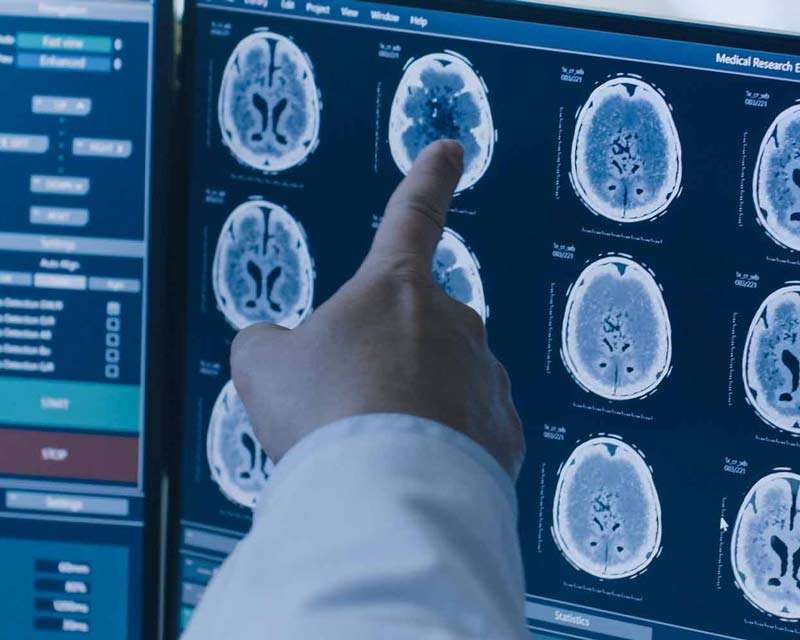
Alcohol-related aggression: New therapies may result from Ohio State study
 Two studies funded by the National Institute of Mental Health could lead to more targeted therapies
Two studies funded by the National Institute of Mental Health could lead to more targeted therapiesImaging technologies can reveal cancerous tumors, vascular anomalies and broken bones. Jay Fournier, PhD, is one of a growing number of researchers who believe these technologies also have the potential to reveal neural mechanisms associated with depression. His work, funded in part by $3.1 million in grants from the National Institute of Mental Health (NIMH), incorporates neuroimaging techniques that could help scientists better understand clinically important differences in brain function among depressed adults.
“Depression is the leading cause of disability worldwide, its impact is growing and there is a critical need to find more targeted and enduring therapies,” says Dr. Fournier, director of the Mood and Anxiety Program and co-director of the Division of Cognition and Emotion in the Department of Psychiatry and Behavioral Health at The Ohio State University College of Medicine.
“Only 50 to 60% of depressed people respond to a given treatment, and only 35 to 40% respond and sustain that response for a year. As a result, many people with depression continue to suffer. I hope my research will lay a foundation to develop more effective, personalized, neuroscience-driven therapies that target the specific neural mechanisms responsible for a patient’s illness,” he says.
Dr. Fournier, a clinical psychologist who joined the faculty at the Ohio State College of Medicine in 2021, is leading two NIMH studies related to this personalized medicine strategy. He has a particular interest in developing tools and techniques for determining upfront which kind of treatment for depression a particular patient might need.
“The current standard of care in the treatment of depression is essentially a trial-and-error approach,” Dr. Fournier says. “I think we can do better than that. We are starting to learn that certain patients are more likely to respond to one kind of treatment — for example, medications. Others are more likely to respond to a different kind of treatment entirely, such as cognitive behavioral therapy, or CBT. I want to understand why that is.”
Dr. Fournier is exploring questions such as:
Both NIMH studies build on Dr. Fournier’s prior work identifying clinical features that could be used to guide treatment selection. They aim to establish better phenotypes of depression by identifying specific neurobiological mechanisms that underlie some of those characteristics. The larger of the two studies is funded by a $2.7 million R01 award. It focuses on a particular clinical feature — excessive self-consciousness — that reflects the tendency to feel shame, embarrassment, humiliation and inadequacy around other people.
Some depressed patients experience these kinds of emotions more than other patients. Dr. Fournier’s preliminary data suggest that excessive self-consciousness is strongly associated with altered functioning in neural regions that support self-reflection (the self-related processing regions) as well as regions that allow us to regulate our emotions (the emotion-regulation regions).
The study is recruiting 125 young adults with at least mild symptoms of depression or anxiety and 75 demographically matched, psychiatrically healthy individuals. All will undergo extensive psychological evaluations and a series of functional magnetic resonance imaging (fMRI) scans. The scans will capture how the brain responds to various emotional challenges. Participants also will keep a diary for three separate weeks to record how well they are functioning at work and in their relationships, as well as real-world experiences related to their emotions and mood.
The study will examine whether abnormal functioning in the self-related processing and emotion-regulation regions can help us understand why some depressed individuals have high levels of excessive self-consciousness and others do not. It will also help determine whether abnormalities in these neural systems are associated with the persistence of psychiatric symptoms and problems in interpersonal relationships and work functioning. Dr. Fournier expects the results of this project to guide the development of novel treatments that can better target the underlying neural systems involved for depressed individuals who measure high in excessive self-consciousness.
The other study, funded by a $400,000 R21 award, follows a similar structure with a psychological workup and fMRI scans. This study aims to more deeply investigate the neural networks associated with abnormalities in self-appraisal in depression.
“We know that depressed people have a negative view of themselves, their circumstances and their futures,” Dr. Fournier says. “But we’re beginning to understand that the actual neural processes involved in thinking about oneself might also be altered in depression. Psychiatrically healthy people tend to have a ready-to-go sense of themselves that they can access relatively quickly. For healthy individuals, this process is typically efficient and involves a small number of circumscribed neural regions.
“That same efficiency seems to be lost in people who are depressed,” he continues. “Our preliminary findings suggest that they engage a much broader neural architecture and use some of the same neural circuits that a healthy individual might use when thinking about a friend or someone else in their lives. Understanding how the process of self-reflection may go awry in depression is important. It may help us to determine why some treatments do not work well for some patients and why treatment gains can dissipate over time.”
These studies will help Dr. Fournier and his colleagues develop better diagnostic and assessment tools for identifying which specific treatments are likely to be most effective for a particular individual. They also lay the foundation for establishing patient-specific therapeutic targets for novel interventions that could alter the underlying neural mechanisms that are keeping a patient ill. These interventions could include:
“The more we learn about the neural pathways that govern thought and emotion, the more we see that depression is not a homogeneous diagnosis,” Dr. Fournier adds. “Different neural mechanisms are present for different patients. Functional neuroimaging can provide objective measures that bring us much closer to understanding what an individual patient needs to experience better outcomes.”